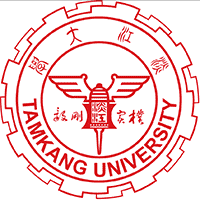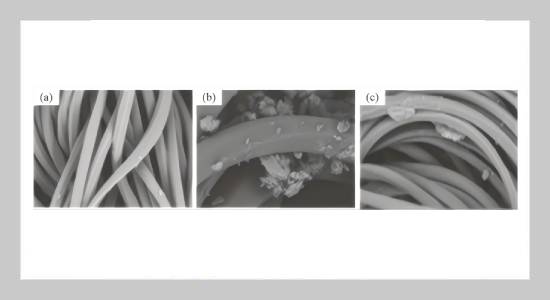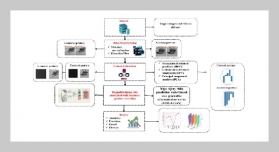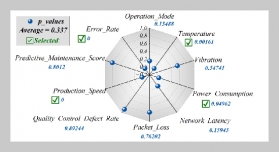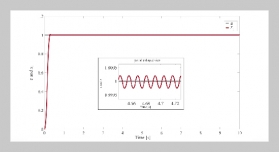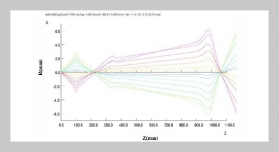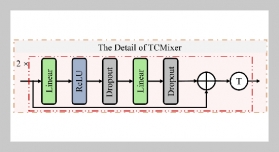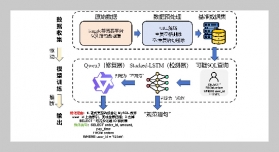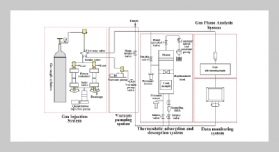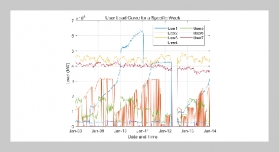- [1] K. Głowacka, J. Małecka, and T. Smolnicki, (2024) “Analysis of the Surface Topography of Fractures Caused by Static and Impact Bending of Polypropylene and Polyamide PA6 Reinforced with Continuous Glass Fibers" Advances in Science & Technology Research Journal 18(5): 51–64.
- [2] W. Wang, M. Peng, Z. Wang, and Y. Liu, “Fully aminated rigid-rod aromatic polyamide efficiently reinforces tetraglycidyl diamino diphenyl methane epoxy resin and its carbon fiber composite" Polymer Composites 45(6): 5725–5736. DOI: 10.1002/pc.28159.
- [3] Y. Duo, X. Qian, B. Zhao, L. Gao, H. Bai, X. Guo, and B. Song, (2022) “Preparation and properties of fluffy high shrinkage polyester/polyamide 6 hollow segmented pie microfiber nonwovens" Textile Research Journal 92(17 18): 3221–3233. DOI: 10.1177/00405175211062098.
- [4] Z. LIU, Z. SHEN, G. SONG, C. C. and bGegu CHEN, and F. PENG, (2024) “Preparation and properties of high-strength and waterproofing wood-derived bioplastic" Journal of Forestry Engineering 9(04): 105–111. DOI: 10.13360/j.issn.2096-1359.202309042.
- [5] H. Wu, J. Qiu, G. Zhang, E. Sakai, W. Zhao, J. Tang, H. Wu, and S. Guo, “Distribution and reinforcement effect of carbon fiber at the interface in injection welding of polyamide 6 composites" Polymer Composites 45(2): 1347–1360. DOI: 10.1002/pc.27858.
- [6] H. Zhang and W. -f. Sun, (2023) “Mechanical properties and failure behavior of 3D printed thermoplastic composites using continuous basalt fiber under high-volume fraction" Defence Technology 27: 237–250. DOI: 10. 1016/j.dt.2022.07.010.
- [7] D. Van Cong, N. V. Giang, T. H. Trung, P. Q. Tuan, N.T. Thai, D. Q. Tham, M. VanTien, and D. V. Quang, “Novel biocomposite from polyamide 11 and jute fibres: the significance of fibre modification with SiO2 nanoparticles" Polymer International 71(3): 255–265. DOI: 10.1002/ pi.6316.
- [8] S. Abdallah, S. Ali, and S. Pervaiz, (2023) “Performance optimization of 3D printed polyamide 12 via Multi Jet Fusion: A Taguchi grey relational analysis (TGRA)" International Journal of Lightweight Materials and Manufacture 6(1): 72–81. DOI: 10.1016/j.ijlmm.2022.05.004.
- [9] J. Chen, P. Tan, X. Liu, W. S. Tey, A. Ong, L. Zhao, and K. Z. and, (2022) “High-strength light-weight aramid fibre/polyamide 12 composites printed by Multi Jet Fusion" Virtual and Physical Prototyping 17(2): 295 307. DOI: 10.1080/17452759.2022.2036931.
- [10] P. K. Mishra, B. Karthik, and T. agadesh, (2024) “Finite element modelling and experimental investigation of tensile, flexural, and impact behaviour of 3D-printed polyamide" Journal of The Institution of Engineers (India): Series D 105(1): 275–283. DOI: 10.1007/s40033-023-00477-8.
- [11] N. N. Khalid, N. A. M. Radzuan, A. B. Sulong, F. M. Foudzi, and D. Hui, “Adhesion behaviour of 3D printed polyamide–carbon fibre composite filament" REVIEWS ON ADVANCED MATERIALS SCIENCE 61(1): 838–848. DOI: 10.1515/rams-2022-0281.
- [12] M. M. Brette, A. H. Holm, A. D. Drozdov, and J. d. C. Christiansen, (2024) “Pure Hydrolysis of Polyamides: A Comparative Study" Chemistry 6(1): 13–50. DOI: 10.3390/chemistry6010002.
- [13] C. Meng and X. Liu, “Study on thermal degradation kinetics of bio-based semi-aromatic high-temperature polyamide PA5T/56 and the effect of benzene ring" Iranian Polymer Journal 31(5): 641–650. DOI: 10.1007/ s13726-021-01018-4.
- [14] E. M. Zakharyan and A. L. Maksimov, “Pyrolysis of polyamide-containing materials. Process features and composition of reaction products" Russian Journal of Applied Chemistry 95(7): 895–928. DOI: 10.1134/S1070427222070011.
- [15] Y. An, T. Kajiwara, A. Padermshoke, T. Van Nguyen, S. Feng, H. Mokudai, T. Masaki, M. Takigawa, T. Van Nguyen, H. Masunaga, S. Sasaki, and A. Taka hara, (2023) “Environmental Degradation of Nylon, Poly(ethylene terephthalate) (PET), and Poly(vinylidene fluoride) (PVDF) Fishing Line Fibers" ACS Applied Polymer Materials 5(6): 4427–4436. DOI: 10.1021/acsapm.3c00552.
- [16] Y. Shao, Y. Dong, and Y. Yang, (2021) “Effect of Low Cycle Fatigue and Hydrothermal Aging on Tensile Properties of Open-Hole Glass Fiber/Polycarbonate and Glass Fiber/Polyamide 6 Composites" Fibers and Polymers 22(9): 2527–2534. DOI: 10.1007/s12221-021-1228-y.
- [17] H. Fang, F. Jia, S. Chen, W. Zhang, L. Huang, F. Wu, H. Chen, D. Lin, and J. Jia, “Significant enhancement of mechanical properties for glass fiber fabric-reinforced polyamide 6 composites by improving interfacial bonding" Polymer Composites 45(8): 7541–7550. DOI: 10.1002/pc.28285.
- [18] K. TANAKA, N. MORIOKA, M. KAWAGUCHI, and K. WATANABE, (2022) “Effect of Silica Addition to Resin on Fiber Matrix Interfacial Shear Strength of Car bon Fiber Reinforced Polyamide Resin at High Temperature" Journal of the Society of Materials Science, Japan 71(6): 501–507. DOI: 10.2472/jsms.71.501.
- [19] W. Chen, Z. Hu, X. Li, J. He, S. Wang, Y. Zhao, M. Li, and J. Zhang, “Additive manufacturing of high-strength polyamide 6 composites reinforced with continuous carbon fiber prepreg" Polymer Composites 45(1): 668–679. DOI: 10.1002/pc.27805.
- [20] W. Zhao, J. Qiu, E. Sakai, H. Wu, Y. Zhao, H. Feng, S. Guo, and H. Wu, “Ultra-high bonding strength of carbon fiber–doped polyamide–aluminum alloy composite structure achieved by changing crystallinity" Polymer Composites 45(14): 13089–13098. DOI: 10.1002/pc.28688.
- [21] , (2024) “Controllable large-scale processing of temperature regulating sheath-core fibers with high-enthalpy for thermal management" Nano Materials Science 6(3): 337–344. DOI: 10.1016/j.nanoms.2023.10.004.
- [22] D. Kwon, S.-K. Park, and Y. Yoo, (2024) “Flow enhanced high-filled polyamide composites without the strength-flowability trade-off" Polymer Bulletin 304: 14823–14836. DOI: 10.1016/j.apenergy.2021.117766.
- [23] M. K. Zeybek, M. Güden, and A. Ta¸ sdemirci, (2023) “The Effect of Strain Rate on the Compression Behavior of Additively Manufactured Short Carbon Fiber-Reinforced Polyamide Composites with Different Layer Heights, In fill Patterns, and Built Angles" Journal of Materials Engineering and Performance 32: 11050–11063. DOI: 10.1007/s11665-023-07918-1.
- [24] X. Zhai, J. Chen, R. Su, X. Gao, X. Zhang, and R. He, “Vat photopolymerization 3D printing of Al2O3 ceramic cores with strip-shaped pores by using polyamide 6 fiber template" Journal of the American Ceramic Society 107(8): 5400–5411. DOI: 10.1111/jace.19836.
- [25] J. Wang, S. Yu, J. Zhou, C. Liang, W. Huang, Z. Hu, Z. Chen, H. Xiang, and M. Zhu, “Discrete molecular weight strategy modulates hydrogen bonding-induced crystallization and chain orientation for melt-spun high strength polyamide fibers" Polymer Engineering & Science 64(9): 4053–4063. DOI: 10.1002/pen.26832.
- [26] L. Mészáros, Á. Bezerédi, and R. Petrény, “Modifying the properties of polyamide 6 with high-performance environmentally friendly nano- and micro sized reinforcing materials" Polymer Composites 45(7): 6404–6413. DOI: 10.1002/pc.28205.
